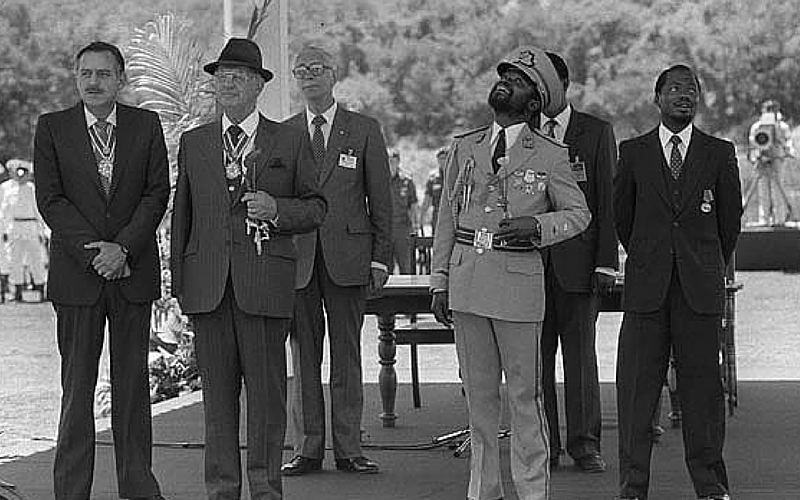On March 16, 1984, Mozambique was forced to sign a special treaty with the apartheid government of South Africa known as the Nkomati Agreement. Mozambique promised not to allow the ANC (African National Congress) or any other South African liberation movements to operate within its borders. In exchange South Africa would stop supporting MNR (Mozambican National Resistance) rebels. The apartheid government of South Africa desperately needed to keep funding its wars in Namibia, Angola and Mozambique and needed the economic benefits from trade with the latter.
Mozambique honored their agreement and most ANC fighters left Mozambique. On the other hand, the apartheid government of South Africa reneged on their agreement and continued to supply, arm and support MNR rebels. South Africa’s support of MNR bandits was part of their greater strategy to destabilize and weaken independent states in Southern Africa.
The MNR was a rebel organization established and supported by the Rhodesian government and the South African apartheid regime. The Rhodesian government was unhappy about the support that FRELIMO and the Mozambican government were giving to Zimbabwe’s liberation fighters.
Mozambique’s support of Zimbabwe’s liberation struggle is estimated to have cost them about $500 million. In addition, many Mozambicans lost their lives as the Rhodesian government bombed many sights to stop the ZANU guerillas.
In addition to South Africa not honoring the Nkomati Agreement, the apartheid government is believed to have assassinated President Samora Machel. On October 19, 1986, Machel attended a summit in Mbala, Zambia, to pressure Zairean dictator Mobutu Sese Seko not to support Angolan opposition movement UNITA. They had hoped Mobutu and Banda would end their support for UNITA and Renamo, who they regarded as South African surrogates.
The Mozambican presidential plane, a Tupolev TU 134A-3 returning from Zambia after the Lusaka Summit crashed in the mountainous terrain near Mbuzini near Komatipoort. The crash site is in the little triangle where the borders of Swaziland and Mozambique meet the South African border in the Lebombo Mountains.





5 responses to “The Nkomati Agreement- Mozambique & South Africa”
Please could you advise where you get your information from? It’s utter rubbish that South Africa “Forced” Mozambique into signing the Nkomati accord. Not only that, but the ANC continued it’s “Operation Vula” against the apartheid South Africa, despite the accord. I was personally involved in investigations of Mozambican infringements of the Nkomati accord, and can tell the truth behind them. Stop re-writing history to suite your particular political and racial beliefs.
Its amazing how much cooperation there was between countries and leaders during the liberation struggle that we don’t seem to have anymore. We must think of ourselves as Africans and that one person’s success is everyone’s success.
I hate when people write Black Global History, why black? Why not Africa instead? Same happen with people that confuses Africa as Country not Continent, they say , I am going to África, come on!
Maybe because Africa is not the only place where melanated people reside and news and history is being made!
We cover the history of black people around the world and sometimes the history has nothing to do with Africa specifically. Our focus is on the people not just the place.